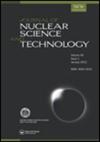使用安装在机械轮式机器人上的集成辐射成像系统,对福岛第一核电站1号反应堆建筑内的放射性热点进行了详细的可视化
IF 1.7
4区 工程技术
Q2 NUCLEAR SCIENCE & TECHNOLOGY
引用次数: 0
摘要
在福岛第一核电站的退役过程中,了解放射性物质的分布和剂量当量率对于制定详细的去污计划和最大限度地减少工人的暴露至关重要。本研究采用Mecanum轮式机器人,配备康普顿相机、同步定位与测绘装置和测量仪表,对电站1号反应堆厂房内的放射性热点和剂量当量率分布进行了远程可视化。我们成功地在干井湿度控制系统的u型管道和横向岩心探测室前天花板的大气控制管道上可视化了高浓度放射性热点。在此基础上,利用康普顿相机对大气控制管路进行了三维定位。通过同时分析测量仪获取的剂量当量率数据和康普顿摄像机显示的热点位置,确认热点引起周边区域剂量当量率升高。将来,如果这个机器人系统被用于未开发的区域,比如反应堆建筑的上层,它可以提供有关放射性热点位置和剂量当量率分布的信息。本文章由计算机程序翻译,如有差异,请以英文原文为准。
Detailed visualization of radioactive hotspots inside the unit 1 reactor building of the Fukushima Daiichi Nuclear Power Station using an integrated radiation imaging system mounted on a mecanum wheel robot
In the decommissioning of the Fukushima Daiichi Nuclear Power Station, understanding the distribution of radioactive substances and dose-equivalent rates is crucial to develop detailed decontamination plans and minimize worker exposure. In this study, we remotely visualized radioactive hotspots and dose-equivalent rate distribution in Unit 1 reactor building of the station using a Mecanum wheel robot equipped with a Compton camera, simultaneous localization and mapping device, and survey meter. We successfully visualized high-concentration radioactive hotspots on the U-shaped piping of the drywell humidity control system and the atmospheric control piping in the ceiling in front of the transverse in-core probe room. Furthermore, the hotspot location was identified in three dimensions using the Compton camera used to analyze the atmospheric control piping. By simultaneously analyzing the dose-equivalent rate data acquired by the survey meter and the hotspot locations visualized by the Compton camera, it was confirmed that the hotspots caused elevated dose-equivalent rates in the surrounding area. In the future, if this robotic system is used in unexplored areas, such as the upper floors of reactor buildings, it can provide information about the locations of radioactive hotspots and the distribution of dose-equivalent rates.
求助全文
通过发布文献求助,成功后即可免费获取论文全文。
去求助
来源期刊

Journal of Nuclear Science and Technology
工程技术-核科学技术
CiteScore
2.40
自引率
16.70%
发文量
116
审稿时长
2.3 months
期刊介绍:
The Journal of Nuclear Science and Technology (JNST) publishes internationally peer-reviewed papers that contribute to the exchange of research, ideas and developments in the field of nuclear science and technology, to contribute peaceful and sustainable development of the World.
JNST ’s broad scope covers a wide range of topics within its subject category, including but are not limited to:
General Issues related to Nuclear Power Utilization: Philosophy and Ethics, Justice and Policy, International Relation, Economical and Sociological Aspects, Environmental Aspects, Education, Documentation and Database, Nuclear Non-Proliferation, Safeguard
Radiation, Accelerator and Beam Technologies: Nuclear Physics, Nuclear Reaction for Engineering, Nuclear Data Measurement and Evaluation, Integral Verification/Validation and Benchmark on Nuclear Data, Radiation Behaviors and Shielding, Radiation Physics, Radiation Detection and Measurement, Accelerator and Beam Technology, Synchrotron Radiation, Medical Reactor and Accelerator, Neutron Source, Neutron Technology
Nuclear Reactor Physics: Reactor Physics Experiments, Reactor Neutronics Design and Evaluation, Reactor Analysis, Neutron Transport Calculation, Reactor Dynamics Experiment, Nuclear Criticality Safety, Fuel Burnup and Nuclear Transmutation,
Reactor Instrumentation and Control, Human-Machine System: Reactor Instrumentation and Control System, Human Factor, Control Room and Operator Interface Design, Remote Control, Robotics, Image Processing
Thermal Hydraulics: Thermal Hydraulic Experiment and Analysis, Thermal Hydraulic Design, Thermal Hydraulics of Single/Two/Multi Phase Flow, Interactive Phenomena with Fluid, Measurement Technology...etc.
 求助内容:
求助内容: 应助结果提醒方式:
应助结果提醒方式:


